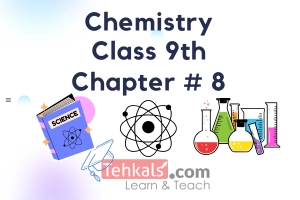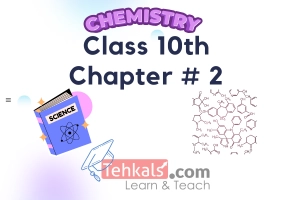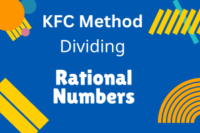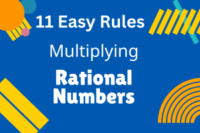Chemistry Class 10 Chapter 1
Published: 10 Dec 2023
Chemistry Class 10 Chapter 1 introduces the concept of Chemical Equilibrium. This is mainly chapter No. 9, “Chemical Equilibrium”, of the book.
This article consists of Notes, SLO Based Notes and MCQs of chemistry, which cover your course, board papers and clear your chemistry concept for different types of tests.
Chemistry Class 10 Chapter 1 Notes
Chemical equilibrium Notes
SLO Based Questions
Chemistry Class 10 Chapter 1 MCQs
1. When Liquid water is placed in a closed container at constant temperature, some of the liquid.(a) evaporates
(b) Distillates
(c) Condensed
(d) None of these
Show Answer
evaporates
Explanation:
2. The rate of evaporation is more than the rate of condensation in the ______________.
(a) Start
(b) Middle
(c) End
(d) None of these
Show Answer
Start
Explanation:
3. When the ______ of evaporation becomes equal to the rate of condensation, then it is called Chemical equilibrium. (a) Frequencyrong>
(b) Magnitude
(c) rate
(d) None of these
Show Answer
rate
Explanation:
4. Due to equilibrium, the concentration becomes ___________ and does not change with time.
(a) Variable
(b) Constant
(c) None
(d) Both a and b
Show Answer
Constant
Explanation:
5. In equilibrium, both forward and reverse reactions occur__________.
(a) Simultaneously
(b) Separately
(c) Both a & b
(d) None of these
Show Answer
Simultaneously
Explanation:
To Download Complete Notes of Chemistry Notes 10 Class, Click on the given link.
6. Whenever a chemical change occurs, ______________ reactions takes place.(a) Physical
(b) Chemical
(c) None
(d) Both a and b
Show Answer
Chemical
Explanation:
7. In a chemical reaction, the substances which ________ are called reactants.
(a) Broken down
(b) Synthesized
(c) combined
(d) None of these
Show Answer
combined
Explanation:
8. In a chemical reaction, the substances which are formed are called ___________.
(a) Products
(b) Reactants
(c) Magnitude
(d) None of these
Show Answer
Products
Explanation:
9. The reactions in which the products do not recombine to form reactants are called ________ reactions.
(a) Reversible
(b) Irreversible
(c) Halogenation
(d) None of these
Show Answer
Irreversible
Explanation:
10. When irreversible reactions once completed, then they cannot be _______ easily.
(a) Forwarded
(b) Saturated
(c) reversed
(d) None of these
Show Answer
reversed
Explanation:
11. Those reactions in which the product can react again to form the reactants are called
(a) reversible
(b) Irreversible
(c) Biochemical
(d) None of these
Show Answer
reversible
Explanation:
12. Reversible reactions can never achieve _______________.
(a) Stability
(b) Completion
(c) Lone pair
(d) None of these
Show Answer
Completion
Explanation:
13. Reversible reactions can easily be ________________.
(a) Completed
(b) Forwarded
(c) Reversed
(d) None of these
Show Answer
Reversed
Explanation:
14. Reversible reactions can be represented by _____arrow between reactants & products.
(a) Single headed
(b) double headed
(c) triple headed
(d) None of these
Show Answer
double headed
Explanation:
15. Reversible reactions can move in ________directions.
(a) Revers
(b) Forwarded
(c) None
(d) Both a & b
Show Answer
Both a & b
Explanation:
16. $ 2HgO \quad \rightleftharpoons $ _____________.
(a) $ 2Hg + O_2 $
(b) $ Hg + O $
(c) $ 3Hg + O_5 $
(d) None of these
Show Answer
$ 2Hg + O_2 $
Explanation:
17. A reversible chemical reaction in which the __________ of forward reaction becomes equal to reverse reaction and concentration of products and reactants remain constant is called chemical equilibrium.
(a) Rate
(b) Speed
(c) Both a & b
(d) None of these
Show Answer
Both a & b
Explanation:
18. In a reversible reaction, ________ equilibrium is achieved before completion.
(a) Dynamic
(b) Static
(c) None
(d) Both a and b
Show Answer
Dynamic
Explanation:
19. In reversible reactions, rate of forward __________ rate of reverse reaction.
(a) Directly proportional
(b) Greater than
(c) Equals to
(d) None of these
Show Answer
Equals to
Explanation:
20. The dynamic equilibrium is one in which two chemical processes continue on equal rate but in _______ direction.
(a) Opposite
(b) Same
(c) Inverted
(d) None of these
Show Answer
Opposite
Explanation:
21. As long as we don’t change the conditions, the system will remain in ___________.
(a) Forward
(b) Reverse
(c) Equilibrium
(d) None of these
Show Answer
Equilibrium
Explanation:
22. At initial stage, the rate of forward reaction is very _________.
(a) Slow
(b) Fast
(c) Negligible
(d) None of these
Show Answer
Fast
Explanation:
23. At initial stage, the rate of reverse reaction is ________.
(a) Negligible
(b) Fast
(c) Slow
(d) None of these
Show Answer
Negligible
Explanation:
24. Forward reaction ______________ gradually.
(a) Speeds up
(b) Slows down
(c) Constant
(d) None of these
Show Answer
Slows down
Explanation:
25. Reverse reaction _____________ gradually.
(a) Speeds up
(b) Slows down
(c) Constant
(d) None of these
Show Answer
Speeds up
Explanation:
26. In ______, two Norwegian chemists proposed the law of mass of action.
(a) 1854
(b) 1864
(c) 1874
(d) None of these
Show Answer
1864
Explanation:
27. According to the law of mass action, the rate of chemical reaction is __________ to the product of the active masses of the reacting substances.
(a) Inversely proportional
(b) Constant
(c) Directly proportional
(d) None of these
Show Answer
Directly proportional
Explanation:
28. The term “active mass” represents concentration of reactant and products in ______________.
(a) $ {Mol.dm^{-3} } $
(b) Hertz
(c) Amu
(d) None of these
Show Answer
$ {Mol.dm^{-3} } $
Explanation:
29. $ R_f \prop $ ________________.
(a) $ [A]/[B] $
(b) $ [A][B] $
(c) $ [A]+[B] $
(d) $ None \ of \ these $
Show Answer
$ [A][B] $
Explanation:
30. At equilibrium state, $ R_f $ __________ $ R_r $.
(a) $ = $
(b) $ > $
(c) $ \div $
(d) $ None \ of \ these $
Show Answer
$ = $
Explanation:
31. $ \frac{k_f}{k_r}= $ ______________.
(a) $ K_c $
(b) $ K_E $
(c) $ K_k $
(d) $ None \ of \ these $
Show Answer
$ K_c $
Explanation:
32. Equilibrium cannot be attained in ____________container.
(a) Close
(b) open
(c) Semi-open
(d) None of these
Show Answer
open
Explanation:
33. In Birk land- Eyde process, nitrogen produces__________.
(a) Sulphuric acid
(b) Nitrous acid
(c) Nitric acid
(d) None of these
Show Answer
Nitric acid
Explanation:
34. In Haber’s process, Nitrogen reacts with hydrogen and produce_________.
(a) Ammonia
(b) Ammonium ion
(c) Ammonical liquor
(d) None of these
Show Answer
Ammonia
Explanation:
35. Refractrometry ,polarimetry, spectrophotometry are the _______ methods to recognize equilibrium.
(a) Chemical
(b) Physical
(c) Analytical
(d) None of these
Show Answer
Physical
Explanation:
36. _______________ is the chemical method to recognize chemical equilibrium.
(a) Ultrasonificaiton
(b) Galvanization
(c) titration
(d) None of these
Show Answer
titration
Explanation:
37. A __________ is a substance that changes the rate of a chemical reaction by remains chemically unchanged itself.
(a) Catalyst
(b) Isotope
(c) An acid
(d) None of these
Show Answer
Catalyst
Explanation:
38. Equilibrium constant is the ratio of the product of the concentration of the reactants at __________ state.
(a) Forward
(b) Reverse
(c) Equilibrium
(d) None of these
Show Answer
Equilibrium
Explanation:
39. The unit of ________ depends on the equilibrium constant expression for the given reaction.
(a) $ K_f $
(b) $ K_c $
(c) $ K_r $
(d) $ Both \ a \ and \ b $
Show Answer
$ K_c $
Explanation:
40 $ K_c $ has ________ for a reaction in which the number moles of reactants and products are equal.
(a) No unit
(b) Two units
(c) Singular unit
(d) None of these
Show Answer
No unit
Explanation:
41. The value of equilibrium constant can be calculated if we know the _______ of reactants and products in the equilibrium mixture.
(a) Concentration
(b) Molar mass
(c) Formula unit
(d) Both a and b
Show Answer
Concentration
Explanation:
42. When the $ [Product] / [Reactants] $ ration is _________ $ K_c $, the system will be not in equilibrium.
(a) Greater than
(b) less than
(c) Equals to
(d) None of these
Show Answer
less than
Explanation:
43. When the $ [Product] / [Reactants] $ ration is less than $ K_c $, the system will move in the _______________ direction.
(a) Reverse
(b) Constant
(c) Forward
(d) None of these
Show Answer
Forward
Explanation:
44. When the ration of $ [Product] / [Reactants] $ is ____________ $ K_c $, the system will not be in equilibrium.
(a) Greater than
(b) Less than
(c) Equals to
(d) None of these
Show Answer
Greater than
Explanation:
45. When the ratio of $ [Product] / [Reactants] $ is greater than $ K_c $ , the system will move in the direction.
(a) Forward.
(b) Reverse.
(c) Constant
(d) None of these
Show Answer
Reverse
Explanation:
46. When $ [Product] / [Reactants] $ ratio is __________ to $ K_c $, then the system will establish equilibrium.
(a) Grater
(b) Lesser
(c) Equals to
(d) None of these
Show Answer
Equals to
Explanation:
47. The extort of reaction depends upon the ____________ of $ K_c $.
(a) Magnitude
(b) Ration
(c) Atomic number
(d) None of these
Show Answer
Magnitude
Explanation:
48. When the concentration of reactants and products will be very close, the $ K_c $, value will be close to ________.
(a) $ 12.2 $
(b) $ 1.0 $
(c) $ -1.20 $
(d) None of these
Show Answer
1.0
Explanation:
49. At dynamic equilibrium.
(a) Reverse reaction stops
(b) Forward reaction stops
(c) Both a and b
(d) None of these
Show Answer
Forward reaction stops
Explanation:
50. A reversible reaction have the following characteristics EXCEPT:
(a) Proceed in both direction
(b) They never complete
(c) Products do not form reactants again
(d) They are represented by $ \rightleftharpoons $ .
Show Answer
Products do not form reactants again
Explanation:
Chemistry Class 10 MCQs (All Chapters)

- Be Respectful
- Stay Relevant
- Stay Positive
- True Feedback
- Encourage Discussion
- Avoid Spamming
- No Fake News
- Don't Copy-Paste
- No Personal Attacks



- Be Respectful
- Stay Relevant
- Stay Positive
- True Feedback
- Encourage Discussion
- Avoid Spamming
- No Fake News
- Don't Copy-Paste
- No Personal Attacks





